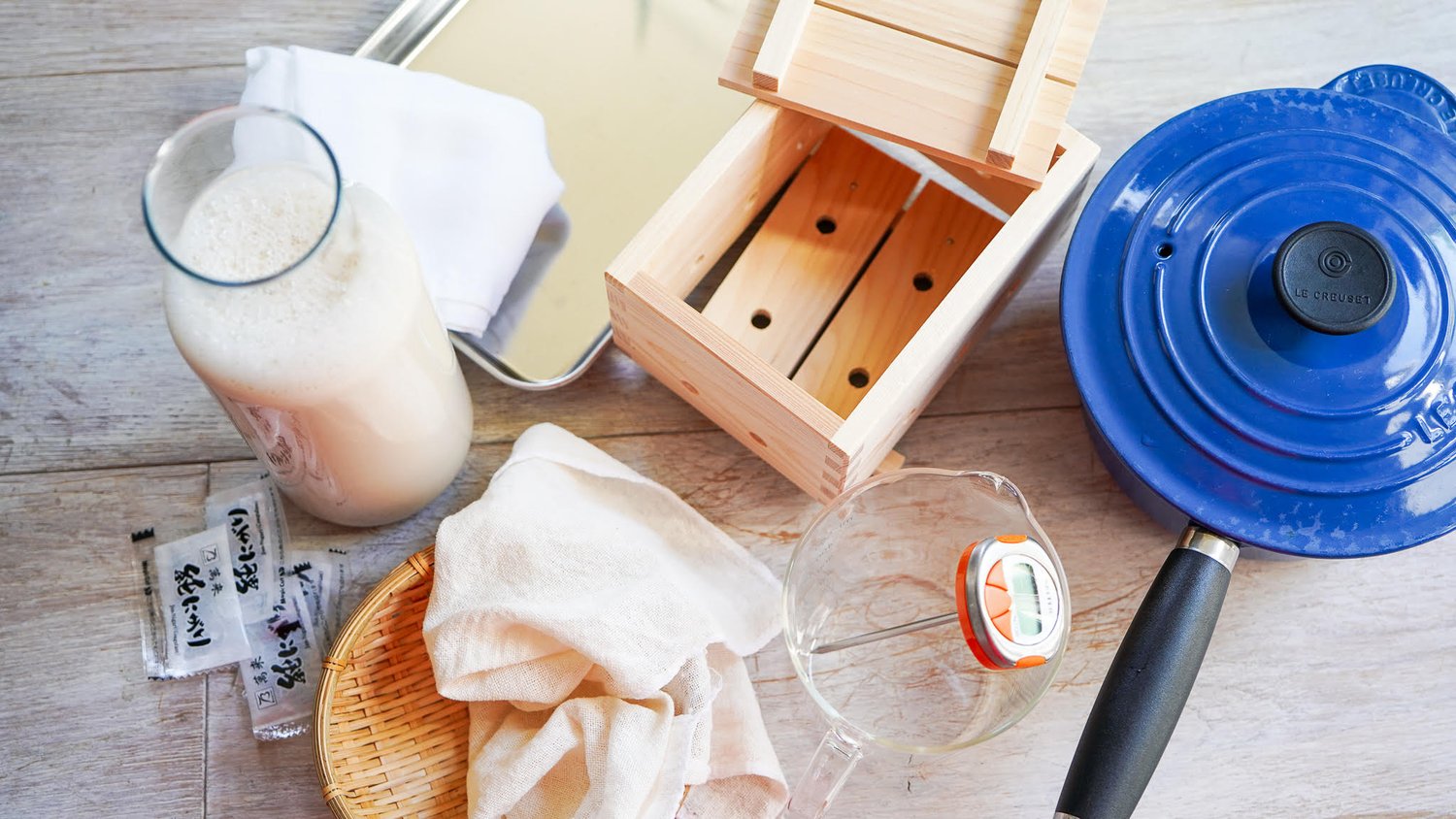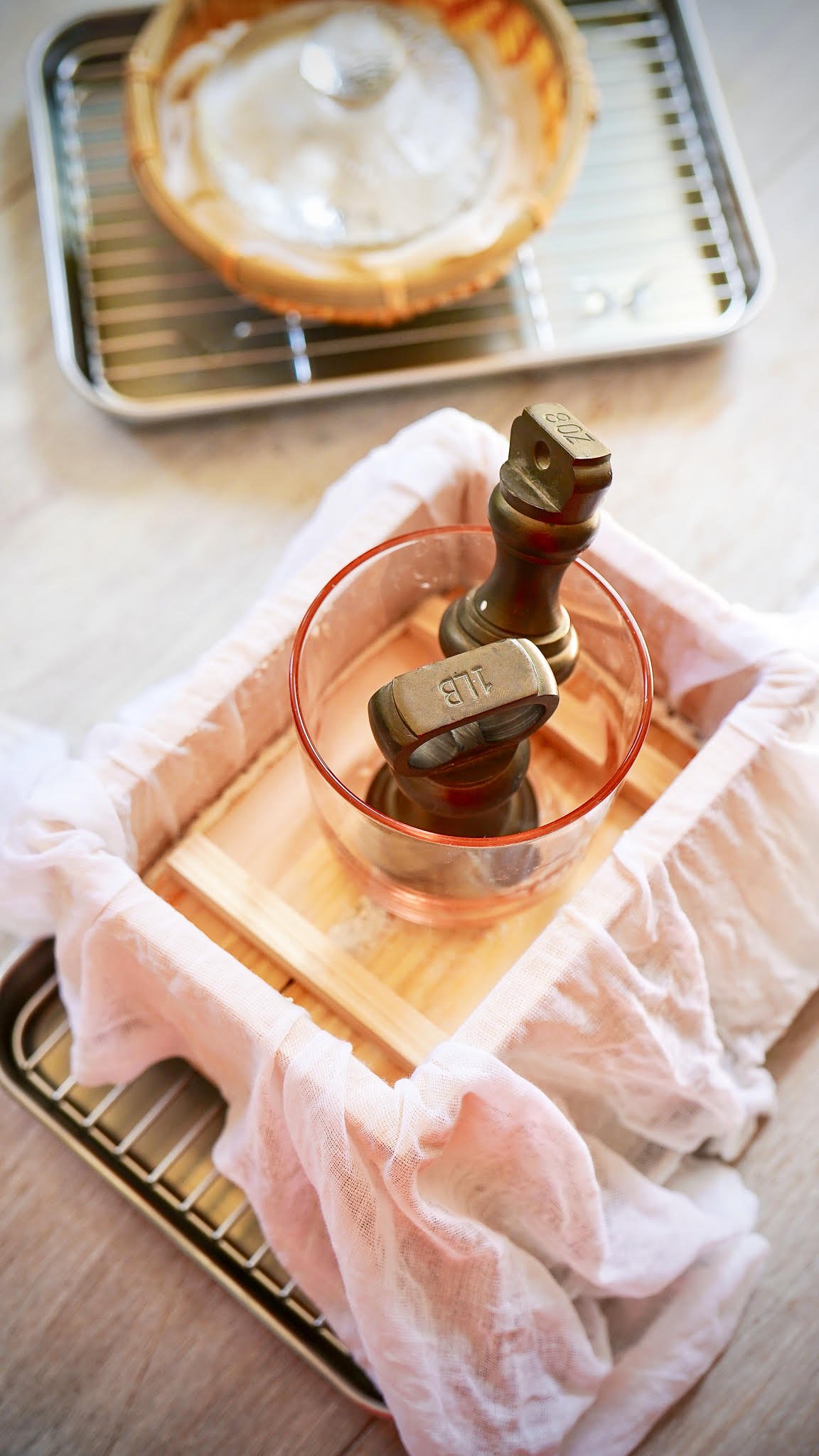All About Tofu: How to Easily Make Your Own At Home
Tofu, or bean curd, is of the most useful and versatile foods but is also misunderstood by many people who perceive it as bland or think of it only as a meat substitute instead of a protein in its own right.
But in Japan, where tofu is a staple food, it is given equal status to other proteins such as chicken and pork rather than treated as a substitution.
Whether you are new to tofu or already love it, read on to learn everything about it, how to use it, and even how to make your own at home!
What is tofu?
Tofu is made from soybeans which are a staple of the Japanese diet and used to make so many quintessential Japanese dishes and ingredients, like natto and miso.
The Japanese diet is considered particularly healthy and tofu is a big part of that — it is a high protein and anti-inflammatory food that is full of antioxidants.
All soy products are full of natural compounds called isoflavones which minimise the impact of free radicals on the body, this can lower your risk of cancer, and certain chronic illnesses and can also lessen the symptoms of peri-menopause.
Soy is also associated with lower cholesterol levels and can help with blood sugar management.
While there has been discussion about the oestrogen levels of soy products, the European Food Safety Authority has concluded that soy isoflavones do not adversely affect the thyroid, breast or uterus in postmenopausal women. There are also fewer cases of breast cancer in Japan.
Some people do have an allergy to soy, however, but luckily more and more tofu and miso alternatives are becoming available using other kinds of beans. It’s also easy to make your own as I do!
The history of tofu
Tofu actually originated in China during the Han dynasty over two centuries ago and reached Japan in the eighth century.
There are many stories surrounding the exact origin of tofu but one of the most popular stories is that it was invented by accident by a chef who was experimenting with flavouring soybeans using the seaweed nigiri and found that it made bean curd. There is also the theory that the method was based on the cheesemaking culture of the Mongolian tribes who lived along the Chinese northern border.
Tofu certainly became popular though, it became integral to cuisines across East and Southeast Asia and by the 1980s there were approximately 245,000 tofu manufacturers globally.
One of my friends comes from a family of tofu makers down multiple generations, it's comparable to Italian cheese-making families. They are beautiful shops to go visit and I just love to see people carry on family businesses for new generations.
How is tofu made?
Tofu is actually made using a very simple and ancient process. Firstly, soybeans are soaked in water, crushed, and then boiled which separates the pulp from the ‘milk’.
Coagulants, such as calcium and magnesium chlorides and sulfates are added to the soy milk to separate the curds from the whey before being poured into a mould.
It will then be set into a cake shape which will be the tofu and is then stored in water and refrigerated. It can be made extra soft, soft (silken), firm, or extra firm and even be dried out.
The different kinds of tofu
It’s important to know the different kinds of tofu and which one you need to choose for your recipe because some dishes simply won’t work if you have the wrong kind. For example, silken tofu and firm tofu cannot be interchanged.
Firm tofu: This type can be used for many dishes, it absorbs flavours well and is durable enough to withstand frying. It is also good for crumbling into dishes, using as a filling for dumplings, or for making tasty appetizers like these pork and tofu patties.
Extra-firm tofu: Extra-firm tofu has less water inside than firm tofu and so has a slight difference in texture. It won’t absorb marinades as well as firm tofu but is well-suited to stir-drying and deep-frying as it is very strong.
Silken tofu: Silken tofu is very soft and delicate, your knife will go through it will very little pressure. This kind of tofu is better used in soups and salads and can also be used in many creative ways to make sauces such as bechamel sauce, for creamy soups and desserts.
Yuba/ Tofu Skin: Tofu skin or yuba is the thin layer that's formed at the top when simmering fresh soymilk. It is laid out to dry and can be used in soups, as dumpling wrappers, made into noodles, or served with dipping sauce. As it isn’t produced using a coagulant, it technically isn’t tofu but it has a very similar flavour and texture.
Where to buy tofu?
Tofu is now relatively easy to get hold of and you can find it in most supermarkets.
I personally love the Clearspring brand (particularly for their silken tofu) as their tofu is high quality, organic and Non-GMO, they also use the seaweed nigiri as a coagulant to make their tofu which is a natural ingredient and very good for you. You can use my promo code (yukiskitchen15) for a discount.
You can also look out for the Dragon Fly brand, they have a factory based here in the UK and their tofu is consistently excellent quality. Sainsbury’s organic tofu is also of similar great quality. These options are perfect for picking up versatile firm tofu.
I also like the brand Tofoo for extra-firm, it is good value and very tough so I love to use this one as minced meat, for example in bolognese, in dumplings or as a vegan tan tan noodle topping. You can learn how to make these in my gyoza class or my ramen class.
Wherever you buy tofu, it is important to make sure the tofu you consume is both organic and Non-GMO, it’s actually one of the foods I am most strict about regarding buying only high quality as low quality can interfere with your hormones.
Of course, you can also make your own tofu and it's easier than you might think!
How to make your own tofu
Tofu is much easier to make then it seems and is so good for you.
If you are looking for a good starter kit then the Wasabi Company has a great tofu-making set available with everything you need. It also makes a great gift! You can use code (Yuki10) for a discount.
Here is my method for making tofu at home!

Make Your Own Tofu and Soy Milk
Ingredients
- 450g dried organic soybeans
- 30g Nigari
- 1/2 cup warm water
- Blender
- Muslin cloth or cheesecloth
- A Fine-mesh strainer, I use this Vegan Milker
- Tofu mould (either an actual mould or a homemade rig), lined with several layers of cheesecloth. I like this Wasabi Company mould
- 500 - 800g of weight, I use some water in a cup.
Method
- Before making tofu, you need to make soy milk. Since this part of the recipe calls for soaking overnight, start the day before making your tofu.
- Wash dried soybeans with running tap water for a few minutes and place them into the large bowl and cover with cold water. Let them soak overnight.
- Drain the beans and place them into the blender with 1.5 litres of water. Blend until very creamy and smooth.
- Pour the mixture into a large pot and heat it up with medium heat. When it starts boiling, reduce the heat and simmer for 10 minutes. Make sure to keep stirring; it is very foamy and will rise up quickly so make sure to keep an eye on the pot.
- Set a fine-mesh strainer with a muslin cloth or your vegan milker. Pour the cooked soy milk into the cheesecloth-lined strainer. It is very hot so pour the milk slowly and strain the milk to let it cool down. Squeeze out the milk as much as possible. It should create about 1-1.5L of soy milk.
- Place the soy milk back into the pot and keep the okara ( soy pulp) to use for cooking. It is very useful and has a high nutritional value! It is also freezable.
- Cook the soy milk one more time with medium heat for 5 minutes then pout it into a jar or use it for tofu making.
- Heat up the soy milk and stir well, remove from the heat and combine the nigiri and ½ cup of warm water.
- Add half of the nigiri liquid and stir the soy milk a few times. Then add the remainder of the nigiri liquid.
- Put the lid on and leave it for 20-30 minutes. You can see the soy milk become curds.
- Place the cheesecloth in the tofu mould and pour in the soy milk mixture.
- Place the lid and weights on top. You will now see lots of liquid coming out from the mould.
- Leave it for 20 minutes and gently take out and soak in the cold water for 30 minutes to remove the taste of nigiri.











